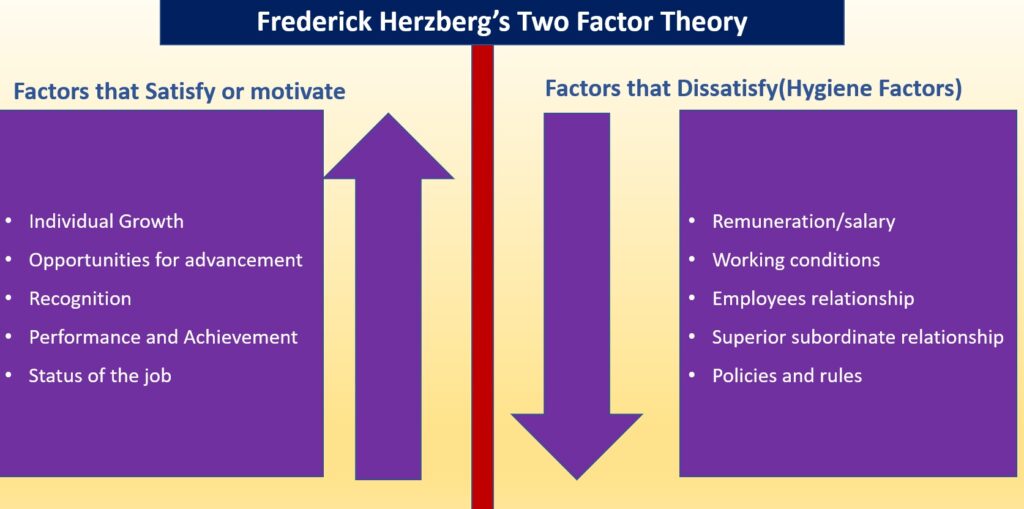Q.1) List-I consists of motivation theories and List-II consists of the motivation theories. You have to match them and indicate the correct match as per code
Codes
| List-I | List-II | ||
| A | Two-factor theory | 1 | David McClelland |
| B | ERG theory | 2 | Fredrick Herzberg |
| C | Theory X and Theory Y | 3 | Douglas McGregor |
| D | Need Theory | 4 | Clayton Alderer |
| A | B | C | D | |
| a | 2 | 4 | 3 | 1 |
| B | 1 | 2 | 3 | 4 |
| C | 1 | 4 | 2 | 3 |
| d | 4 | 3 | 2 | 1 |
Answer: (A)
Explanation:

Explanation: Two-factor theory of Herzberg also known as Herzberg’s Motivation Theory and dual-factor theory which states the factors of employee’s satisfaction and dissatisfactions. This theory says if the factors that motivate employees are not present, the employees demotivated.
Q.2) The conflict over content and goals of the work is called
a. functional conflict
b. process conflict
c. relationship conflict
d. task conflict
Answer: (d)
Explanation:
Q.3) _____ theory of motivation ignores the inner state of the individual and concentrates solely on what happens when he or she takes some action.
a. equity
b. expectancy
c. Goal-setting
d. Reinforcement
Answer: (d)
Explanation:
Equity theory states that the employees reduce their performance or contribution for equity or fairness when they know the same benefits gave to other employees who contribute less.
Vroom’s expectancy theory explains that the employees motivated towards better performance if they know their increased performance appreciated or recognized and rewarded.
Goal-setting theory belongs to increase in the performance or motivation of employees based of goal. Every employee has assigned specific goal and these goals or targets coordinated towards the organization goal.
Reinforcement theory belongs to the shaping the external behaviour of employees using the factors such as punishments, reward, avoiding overload or complicated work. Hence the reinforcement theory ignores the inner state of employees and focuses on their behaviour. The result of action taken such as punishment, avoiding assigning difficult work. Thus, the correct answer is option ‘d’.
Q.4) In the ‘Big-Five’ personality factors widely accepted personality traits are mentioned. The trait of being dependable, organized, conforming and preserving on tasks is called
a. extroversion
b. consciousness
c. agreeableness
d. emotional stability
Answer: (b)
Explanation:
Q.5) Given below are four statements. Some of the statements are incorrect. You have to choose the correct one.
a. A satisfied employee is a motivated employee
b. Employees who are happy ‘being around’ are good contributors to the organization
c. Motivated employees do not need engagement
d. Customer loyalty has been found to be positively correlated with employee engagement
Answer: (d)
Explanation: It is very difficult to differentiate engaged employees and motivated employees. Motivated employees engaged or possibly less engaged where as engaged employees can contribute more always than any other employees. Simply it described as the engaged employees are always motivated whereas motivated employees may not always motivated. So the option is ‘d’ is correct out of given statements.
Motivated employees take efforts till the motivation is given. as soon as the motivation removed the employees stop contributing better performance. the theory of cognitive learning better explains the importance of motivation. In-case of engaged employees, due to their involvement without or with motivation will longer. It will satisfy the organization through better performance.

